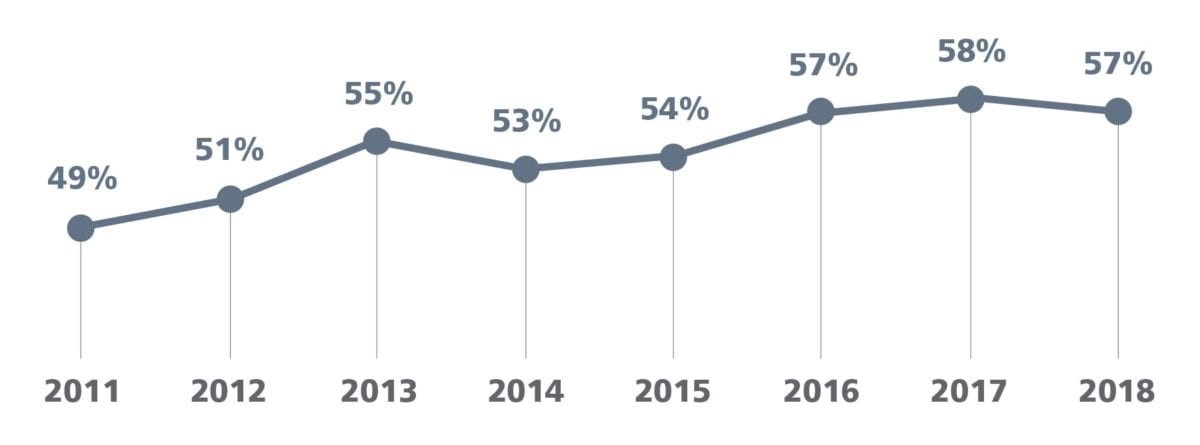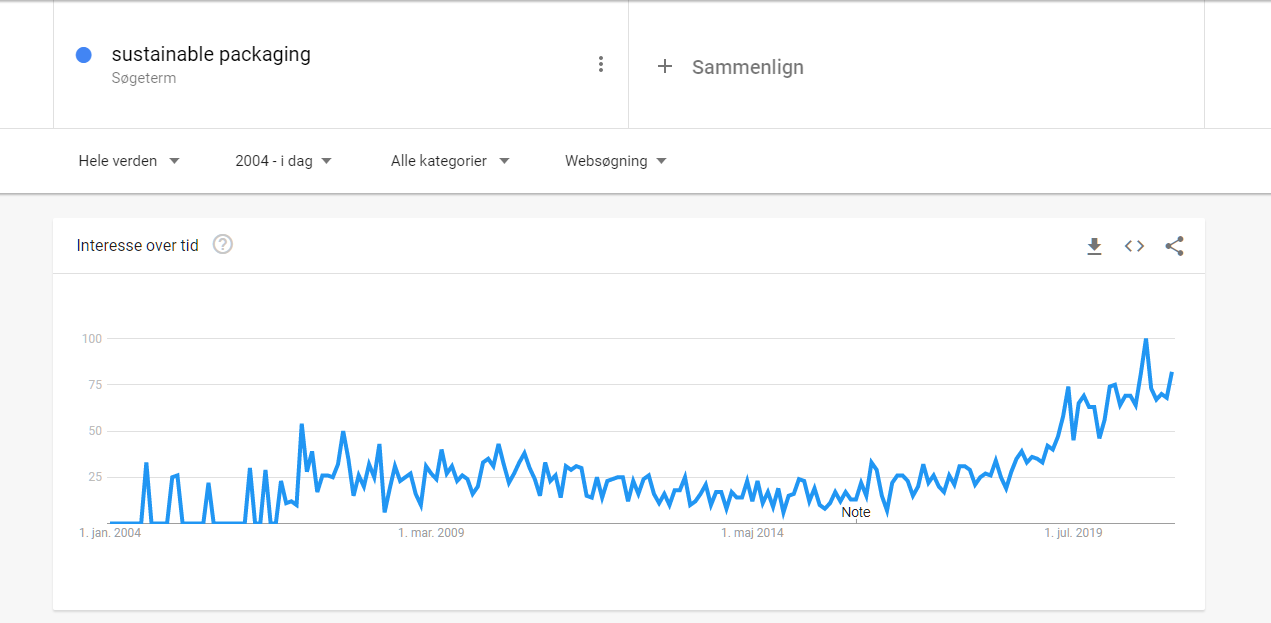Important things to consider when buying eco-friendly and sustainable e-commerce packaging
The global retail industry is constantly changing. In particular, the e-commerce market is booming more than ever before.
The development is especially noticeable in the packaging industry, which is growing at lightning speed. It’s estimated that the European packaging industry will hit 214 billion US Dollars as soon as 2023. This is equivalent to about 189 billion Euros.
This development places high demands on the e-commerce industry. Companies need to be ready and willing to adapt their packaging to the market’s developments and trends. At least, if they have ambitions of winning the digital race in the future.
In this article, we’ll be taking a look into the crystal ball and giving you five predictions for the trends that will form the global market for e-commerce packaging in the coming years.

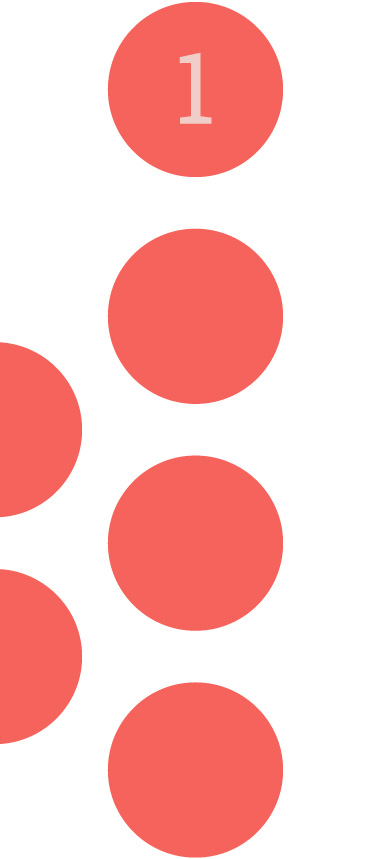
E-commerce and its (continuing) explosive development
Have you shopped online in the last couple of months? If the online shopping statistics are correct, you most likely have. Today, more and more companies are choosing to jump on the e-commerce wave. In 2019, global e-commerce reached a total of 3.53 trillion US Dollars (equivalent to about 3,125,109,000,000 Euros), a number that is predicted to rise to 6.54 trillion US Dollars as soon as 2022 (equivalent to about 5,787,900,000,000 Euros). That’s almost double in just a few of years.
This should also be seen in the light of changing consumer buying behaviour. During a time of lockdowns and restrictions, more and more chose to shop online instead of in physical stores. And businesses naturally followed suit, both in terms of sales via online marketplaces such as Amazon and directly from retail to consumer.
On the one hand, the rise of e-commerce is beneficial for businesses. On the other, it raises challenges in terms of packaging. The pressure to produce packaging is increasing. At the same time, consumers place higher demands on the material and functionality of the packaging. There’s a focus on quality, the environment and a good consumer experience – all the way from placing the order online to the delivery and unboxing.
The key to success lies in the following:
- Meeting consumer demands
- Being able to integrate digital developments into new and innovative packaging solutions.
All without increasing costs, or course.

Environmentally-friendly packaging is the way to consumers' hearts – and their wallets
Today, we’re experiencing a huge focus on sustainability. Consumers are becoming more and more environmentally aware, and they take sustainability into account when they shop. According to a recent study from GlobalWebIndex, interest in sustainable products is rapidly growing.
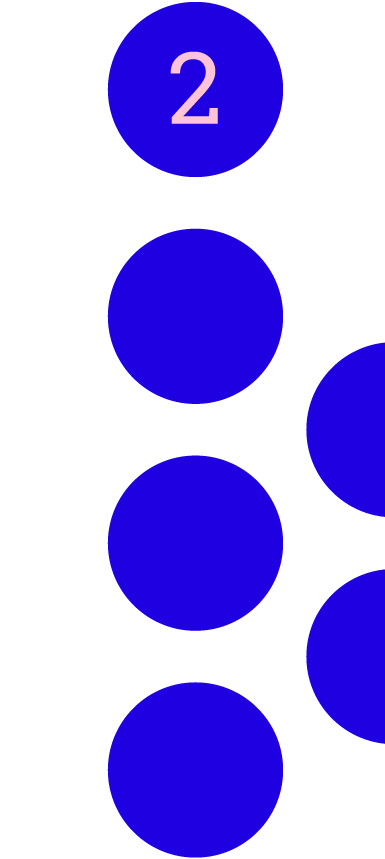
The graph above shows that we are generally becoming more willing to pay more for environmentally-friendly products. Consumers are actively looking for sustainable alternatives in their everyday lives. Product packaging is no exception.
The statistics for the rising interest for sustainable packaging are unmistakable, which can clearly be seen in the graph below from Google Trends:
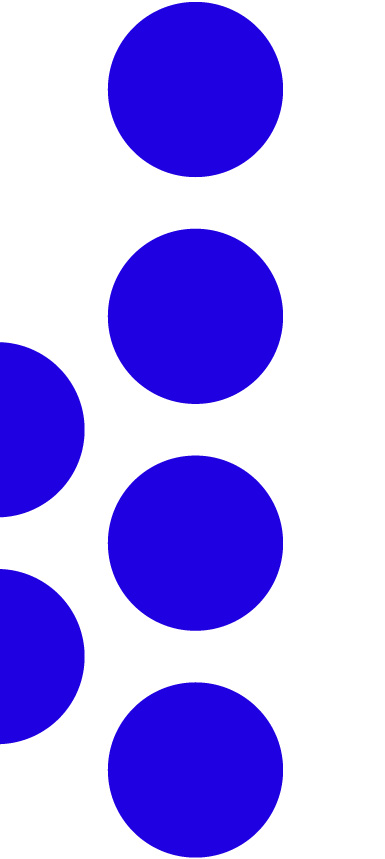
If we dig deeper into the numbers from GlobalWebIndex, the importance of sustainability and environmentally-friendly packaging becomes even clearer:
- 86% of European consumers consider environmental pollution a “very big problem.” Packaging is seen as one of the biggest problems.
- 91,5% will deliberately choose packaging with reduced plastic over packaging made with fossil fuels.
- 42% believe that what they buy every day is influenced by sustainable materials.
- 60% will be more likely to switch to environmentally-friendly brands.
Many companies have long since started to adapt to the demands of sustainable packaging. They not only prefer, but demand that their packaging contribute to less waste and energy consumption. At the same time, EU countries have committed to reducing greenhouse gas emissions by 55% by 2030.
In this context, there lies an enormous commercial potential in sustainable packaging. McKinsey & Company partner, David Feber, describes it as follows:
“The opportunity for the packaging industry is to find cost-effective ways to make things more sustainable.”
Partner at McKinsey & Company, David Feber
In Feber’s view, the future’s leading brands will be those that embrace environmentally-friendly practices, such as by reducing the weight of packaging and the number of materials or by using biodegradable and recyclable materials like cardboard, paper, bioplastic or similar.
In this way, you can raise your company’s sustainable profile and thereby influence your customer’s purchasing decisions.
Whether you will succeed in this or not? Well, according to Feber, it all depends on your company’s ability to:
“[…] understand the future of sustainability and its impacts on your product line.”

Packaging as an extraordinary experience
The third trend on this list concerns the consumers’ expectations of your packaging. Packaging is no longer simply a practical thing. Of course, functions such as durability and protection are important. But consumers also expect that the packaging offer an experience, specifically, a good and even extraordinary experience.
For example, a consumer survey from Dotcom shows that:
- 49% are more excited to receive a product if the packaging provides an extraordinary experience.
- 39% are more likely to share the product and experience on social media.
By integrating a good experience into the purchasing journey, you can achieve great benefits. You can stand out, get better customer satisfaction and attract positive attention.
There are many ways to create extraordinary experiences:
- Give customers something “extra,” something surprising, memorable and unexpected
- Use sustainable materials with an upmarket “look and feel”
- Personalise your messages and communication
- Use creative and branded packaging
- Think about smart, easy and time-saving unboxing
This list is far from exhaustive. But what all of these practices have in common is that they contribute to creating added value. This makes consumers remember you – for the right reasons. And at the same time, it increases the likelihood that they will come back as loyal customers to your shop.
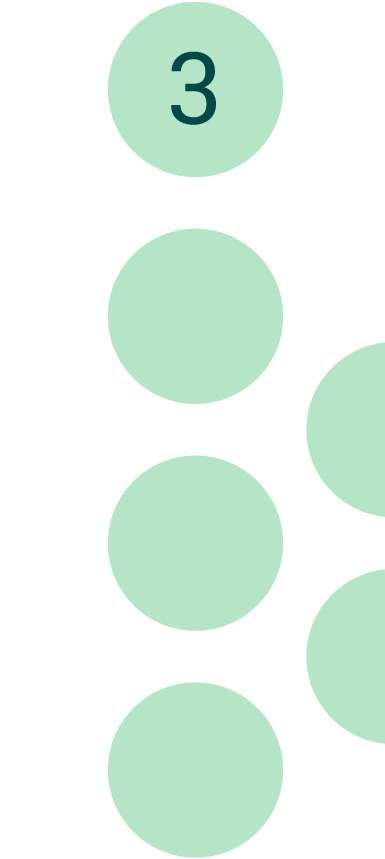

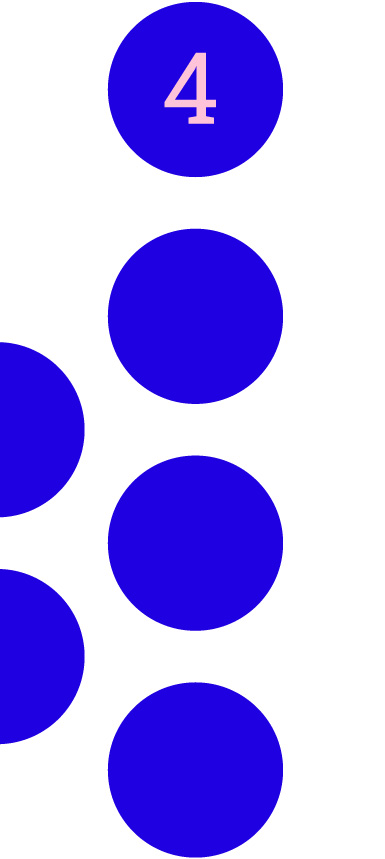
Convenience, convenience – and more convenience
There’s nothing better for businesses than happy and satisfied customers. On the other hand, there’s nothing worse than angry and unsatisfied customers. The modern consumer has become more critical when it comes to their buying behavior. Demands with regard to the buying journey are sky-high, and an optimal and seamless experience is expected. Not least in terms of the packaging.
This is confirmed, for example, in a study by the American Institute for Packaging and the Environment. The study clearly shows that consumers demand solutions where convenience and ease of use are high priorities:
- 50% of consumers indicate the availability and disposal of packaging as a primary cause of frustration.
- 33% dislike packaging that is difficult to dispose of, such as packaging that takes up space in the bin or is difficult to break down.
- 25% are annoyed by packaging that is difficult or impossible to recycle.
The number speak for themselves: it should be easy, quick and hassle-free to handle packaging after use. Too much time wasted and hassle when it comes closing and disposing of packaging causes frustration, and it affects the whole buying experience.
Therefore, companies will be wise to consider user-friendly packaging. This means a design that will make recycling:
- Easy
- Time-saving
- Transparent
The same applies to the packaging’s repackability and return options. According to PostNord, 47% of Nordic consumers believe that hassle-free returns are important for e-commerce. It should be easy and uncomplicated; for example, in the form of a return label, clear instructions, practical adhesive strips for easy re-sealing etc.
In short, think about user-friendly packaging in the overall buying experience. This is the way to satisfied customers.

Use the packaging again and again and again…
We round off this short list of trends by focusing on recycling. There is a growing demand for packaging that can be recycled.
According to GlobalWebIndex, 64% of consumers point to recycling as the most important characteristic of packaging. This is closely linked to their demand for sustainable packaging, as recycling contributes to reducing the environmental impact. Reusable packaging can therefore make you more attractive to environmentally-conscious consumers.
The formula is to develop quality, safe and modern packaging that is worth reusing. This is to say, packaging that reflects a high (re)use value so that customers will want to keep it. This could be an upmarket or durable carrier bag or a bag that lasts for years, or a beautiful gift box that can be reused from person to person or as decorative storage.
It’s all about getting customers to use the packaging again – and again and again and again. This way, they take on the role of “brand ambassador”, displaying your brand in public. This contributes to increased visibility, recognition and loyalty.
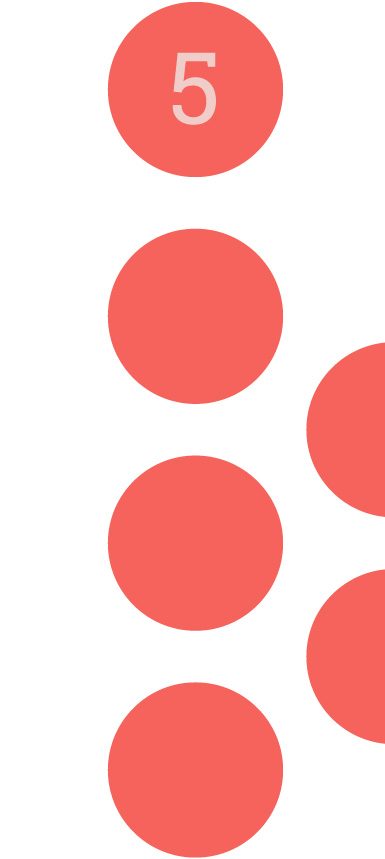
Sustainable packaging is the future – and present
Sustainable packaging is the future – and present
We’ve come to the end of our review of e-commerce packaging trends. One trend stands out: a green trend that today’s companies need to take into account:
Today, there is an increased focus on and demand for climate-friendly and sustainable packaging, both in terms of environmentally-friendly materials, reduction of weight and materials, recyclability and many other parameters.
The “green” agenda is unmistakable. Consumers and businesses alike want to bring packaging into the fight for a better global environment.
Sustainable packaging is here to stay – also in the future!
Sources:
American Institute for Packaging and the Environment (2017): Optimizing Packaging for an E-commerce World.
GlobalWebIndex (marts 2019): Sustainable Packaging Unwrapped.
EU.dk.: EU’s klimamål.
Katherine White, David J. Hardisty, Rishad Habib: The Elusive Green Consumer – i Harvard Business Review, udgave juli-august 2019 (pp.124–133).
PostNord (2019): E-commerce in Europe 2019.
Packagingworld.com: Five megatrends impacting the packaging industry.
Smithers Pira og Packaging Europe (rapport, 2018): The European Packaging Competitive Landscape.
Let's talk
We would like to hear from you if you have any question or need a quote. Fill out this form and one of us will get it touch with your shortly.
Other stories
ARTICLE
Read the 5 things about e-commerce packaging that annoy consumers
What things are particularly irritating to consumers when it comes to e-commerce packaging – and why? Read on in this blog post, in which we highlight five common frustrations that you should avoid when developing packaging for your business.
ARTICLE
Find the key to e-commerce success
In this article, we focus on how you can optimise the shopping experience with environmentally friendly packaging solutions – throughout the entire customer journey. This may well be the key to your personal e-commerce success.
Design Project
A shipping bag for the senses
Let your core values be reflected in your shipping packages. Here there is both a pop of colour and climate-conscious values.
